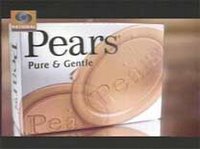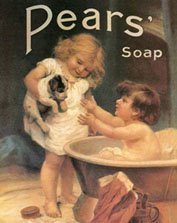Santoor is the second largest soap brand in the Popular segment in India. This Rs 500
crore brand comes from the Software giant
Wipro. The brand was launched in 1985 as an ordinary soap with sandalwood and turmeric as its main ingredients.
The brand was initially test marketed in Bangalore and encouraged by the positive res
 ponse
ponse, the brand became national a year after.The brand was positioned as the beauty + skin care at a
reasonable price and the brand derived strength from the efficacy of the ingredients. At that time the brands which had sandal as the main ingredient was
Moti and Mysore Sandal Soap.
The brand derived the name from combining Sandal + Turmeric and it is not from the musical instrument that it got the name
Santoor.
Although the brand became popular, the company was not satisfied with the results. The customers was not buying the ingredient story : says MG
Parameswaran in his book on Brands:
FCB Ulka case studies. The research suggested that customers are not correlating the brand with skin care and beauty.
Thus started the brain storming on getting the " WOW " factor to build the brand. The wow factor came in the form of the new positioning " For Younger Looking Skin". The positioning come from the consumer insight that ultimately the customers look for a younger skin which is another smart way of defining beauty. The focus on " Younger Skin" also act as a powerful
differentiator because other brands were
focusing on "beautiful skin" or "looking beautiful".
The next

big idea came
in the form of communicating the " Younger Skin " concept using "Mistaken Identity " theme ( source : MG
Parameswaran's Book). The brand has
consistently developed this theme over these two decades of its
existence.
Santoor is a brand has
consistently understood the consumers and was not complacent to change. The brand was the first one to use a Mother and her five year old daughter to endorse the brand. Most of the ads showed spinsters in their campaigns while for
Santoor, the protagonist were Mothers. But showing Mother as the protagonist had its share of issues also. The customers felt that since this brand is meant for adults, it will not be soft on skin. This made the company to change the size texture and the shape of the product.
In Brand Management , I used to teach that changing consumer values were one of the major forces that affect a brand. The case was true for
Santoor also. Indian women's mindset were
evolvingand breaking free from the traditional mindset. The Mother-daughter equation and the campaigns set in the supermarkets, wedding and bangle shop did not do well with the achievement oriented customers. That was a message to the marketers that the product communication has to change. The achiever protagonist was introduced in 2004. The campaign showed the mother as a successful fashion designer with the same positioning and theme.The brand also extended itself to a range of beauty products and to talc. Now
Santoor have face wash, talc , soap and fairness cream.
2006 saw a big change in the marketing strategy for
Santoor. The campaigns showed
Saif Ali Khan ( in North ) and
Madhavan ( south ) in the
TVCs. The
TVC's shows these celebrities along with the Mother and child in the usual mistaken identity theme. Many were asking whether the brand is going to appeal to males also. I was also taken by surprise seeing Male celebrities endorsing ( acting ) in the
Santoor ad. The following questions remain unanswered:
a. Whether this brand needs celebrity endorsement?
b. Is bringing in a male celebrity going to make this brand less appealing ?
c. Has the equity of the protagonist getting diluted with the introduction of celebrity?
For the first two questions, my personal opinion is that using a celebrity without a change in the overall positioning will have a positive impact to the brand. The use of celebrity will make the ad sticky thus making the campaign more effective. For the question C, I believe that with the celebrity, the power of protagonist will get diluted because she is plays a second role in the campaign( debatable point). But as long as the positioning remains
consistent, there are no issues isn't it?
Santoor is a super brand that has build itself to a Rs 500
crore brand with its own strength and not piggy banking on any celebrity. The brand is facing tough competition from heavy weights and is now seeking support from outside to stay as a leading
FMCG brand.
Related Brands
Pears, Mysore Sandal Soap, Margo, Lifebuoy,Rexona,Dyna, Johnsons,Fair and lovely, Cinthol,Dove, PondsSource: Businessline,wiprowebsite,FCB Ulka on brands.











